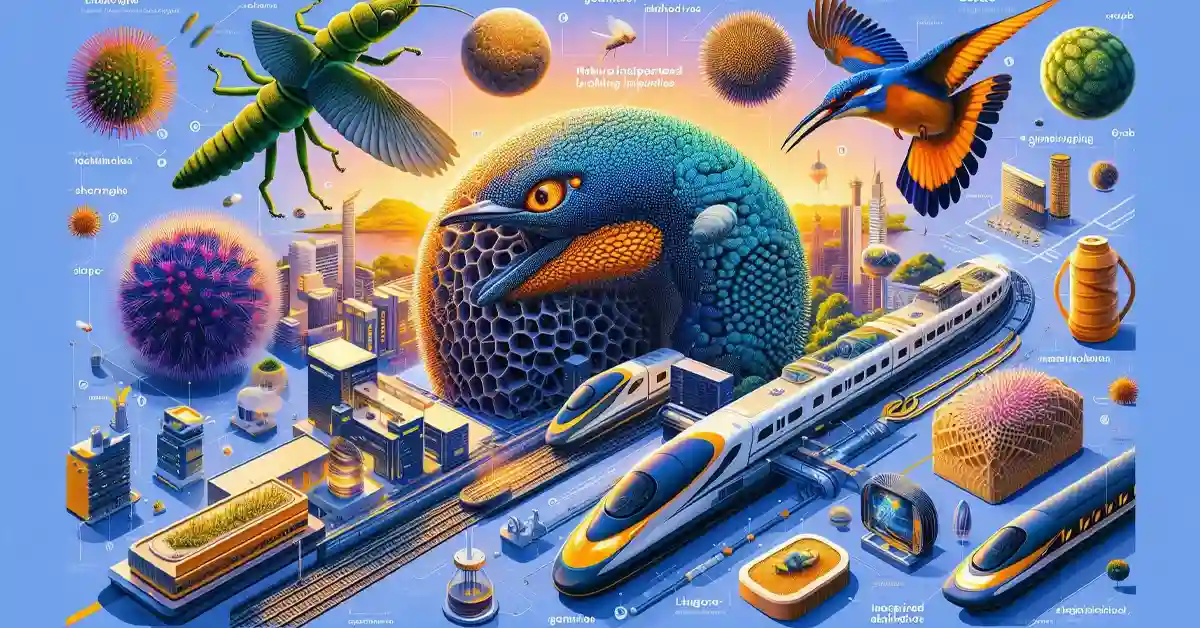Have you ever wondered how nature’s designs could lead to groundbreaking technological advancements? Biomimicry technology is transforming industries by drawing inspiration from the natural world. From designing efficient buildings based on termite mounds to creating adhesives inspired by gecko feet, biomimicry offers innovative solutions that are both sustainable and effective.
What is biomimicry technology? How does it work, and what makes it so revolutionary? Join us as we explore the fascinating realm of biomimicry technology and uncover its potential to change the world. This article will guide you through the principles of biomimicry, showcase real-world applications, and provoke thought on how tech innovators can integrate these natural insights into their designs.
The benefits of adopting biomimicry technology are profound. It not only drives innovation but also promotes sustainability and efficiency. By mimicking nature’s time-tested patterns, we can solve complex problems in new and exciting ways. Let’s dive in to understand how nature’s genius can inspire human ingenuity.
Understanding Biomimicry Technology
Biomimicry technology is the practice of learning from and mimicking the strategies found in nature to solve human problems. It involves studying the natural world’s best ideas and then emulating these designs and processes to create products, processes, and policies that are sustainable and well-adapted to life on Earth.
Biomimicry is not just about copying nature; it’s about understanding the principles behind natural designs and applying them in innovative ways. This approach fosters sustainable solutions by integrating life-friendly chemistry, circular processes, and efficient use of resources.
Tech innovators have begun to see nature as a model, measure, and mentor. This shift in perspective opens up endless possibilities for creating more efficient, sustainable, and resilient technologies.
The History of Biomimicry
Biomimicry is not a new concept. Humans have looked to nature for inspiration for centuries. Leonardo da Vinci studied birds to conceptualize flying machines, and ancient civilizations mimicked natural forms in architecture.
Modern biomimicry began to gain traction in the 20th century with advances in technology and a growing understanding of ecological systems. The term “biomimicry” was popularized by Janine Benyus in her 1997 book, “Biomimicry: Innovation Inspired by Nature.”
Today, biomimicry has evolved into a formal discipline with dedicated research institutions, design firms, and academic programs that promote its principles and applications.
Principles of Biomimicry
Three core principles guide biomimicry technology:
- Nature as Model: Studying nature’s models and emulating these forms, processes, and systems to solve human problems.
- Nature as Measure: Using an ecological standard to judge the sustainability of our innovations.
- Nature as Mentor: Viewing and valuing nature not solely for its instrumental capability but as a source of wisdom and guidance.
By adhering to these principles, biomimicry ensures that technological innovations are sustainable, efficient, and harmonious with the natural world.
Real-World Applications of Biomimicry
Biomimicry has led to numerous breakthroughs across various fields. Here are a few notable examples:
- Architecture: The Eastgate Centre in Zimbabwe uses a ventilation system modeled after termite mounds, reducing the need for air conditioning and saving energy.
- Transportation: The Shinkansen Bullet Train in Japan reduced noise and increased speed by mimicking the Kingfisher bird’s beak shape.
- Healthcare: The design of Velcro was inspired by the way burrs stick to animal fur, leading to a versatile and widely used fastening solution.
These examples demonstrate how biomimicry can lead to innovations that are both effective and environmentally friendly.
Biomimicry in Customer Service
Biomimicry isn’t limited to physical products; it can also be applied to improve processes and services. In customer service, for instance, companies have developed algorithms inspired by ant colony behavior to optimize routing and resource allocation.
By observing how ants efficiently find the shortest paths to food sources, tech innovators have created systems that enhance customer service efficiency, reducing wait times and improving user satisfaction.
Biomimicry in Human Resources
Human resources can benefit from biomimicry by adopting strategies seen in nature for team building and leadership. For example, bees and ants exhibit collective decision-making and collaborative behaviors that can be translated into effective HR practices.
Implementing these natural strategies in human resources can lead to more cohesive teams, better conflict resolution, and improved overall productivity.
Biomimicry in Data Analysis
Data analysis algorithms inspired by the neural networks of the human brain have revolutionized the field. These biomimetic algorithms can process vast amounts of data quickly and accurately, finding patterns that human analysts might miss.
Neural networks enable predictive analytics, allowing businesses to make informed decisions based on data-driven insights.
Biomimicry in Supply Chain Management
Supply chain management systems have incorporated biomimicry principles by mimicking the efficiency of biological networks. For example, slime mold has been studied for its ability to find the most efficient routes for nutrient distribution, leading to improved logistics and distribution networks.
This approach helps companies reduce costs, improve delivery times, and minimize environmental impact.
Biomimicry in Marketing
Marketing strategies can also benefit from biomimicry. The way flowers attract pollinators through colors and scents has inspired marketing campaigns that use sensory appeals to attract customers.
By understanding and applying these natural attraction mechanisms, companies can create more compelling and effective marketing campaigns.
Challenges and Considerations
While biomimicry offers numerous benefits, it also comes with challenges. One major challenge is translating natural designs into practical applications. The complexity of biological systems can make this process difficult.
Additionally, there may be ethical considerations in using living organisms as models. It’s essential that biomimicry practitioners respect and preserve the natural world while drawing inspiration from it.
The Future of Biomimicry Technology
The future of biomimicry technology is bright. As our understanding of biological systems grows and technology advances, the potential applications of biomimicry will expand.
Emerging fields such as synthetic biology and bio-inspired computing hold promise for even more innovative solutions that are well-integrated with the natural world.
By continuing to learn from nature, we can develop technologies that are not only advanced but also sustainable and harmonious with our environment.
Conclusion
Biomimicry technology stands at the intersection of innovation and sustainability. By learning from and emulating nature’s time-tested strategies, tech innovators can create solutions that are both effective and environmentally friendly.
Whether it’s improving customer service, optimizing supply chains, or developing new marketing strategies, the potential applications of biomimicry are vast. By adopting these principles, businesses can stay ahead of the curve and contribute to a more sustainable future.
Are you ready to explore the possibilities of biomimicry technology for your own projects? Start by observing the natural world around you and think about how its designs can inspire your next innovation.
Frequently Asked Questions and Answers
What is biomimicry technology?
Biomimicry technology is the practice of learning from and mimicking nature’s strategies to solve human problems. It involves studying natural designs and applying them in innovative ways to create sustainable solutions.
How is biomimicry used in everyday products?
Biomimicry is used in various products such as Velcro, which was inspired by burrs sticking to animal fur, and the Shinkansen Bullet Train, which mimics the Kingfisher bird’s beak shape to reduce noise and increase speed.
What are the benefits of biomimicry technology?
The benefits of biomimicry technology include improved efficiency, sustainability, and innovation. By emulating nature, we can develop solutions that are both effective and environmentally friendly.
Can biomimicry be applied to services and processes?
Yes, biomimicry can be applied to services and processes. For example, customer service algorithms inspired by ant colony behavior can optimize routing and resource allocation.
What are some challenges of biomimicry technology?
Challenges of biomimicry technology include translating complex biological designs into practical applications and addressing ethical considerations in using living organisms as models.










